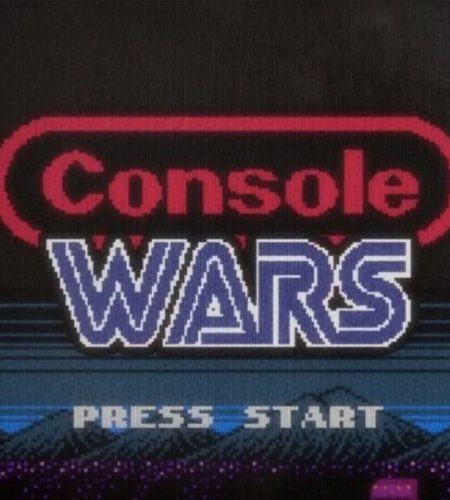The 1990s were a transformative decade for gaming, marked by the epic rivalry between Nintendo and Sega. Known as the “Console Wars,” this battle for dominance not only shaped the gaming industry but also had a profound impact on the lives of young millennials. Were you a Nintendo kid or a Sega kid? Or were you one of those kids who had both? These questions often sparked spirited debates on playgrounds and at sleepovers. Beyond mere entertainment, the Console Wars highlighted issues of accessibility and class, as the ability to own multiple gaming consoles was not only often a symbol of wealth, but one of the first constructs of social stratification experienced by young people in the late 20th century. Let’s dive into how the Console Wars of the ’90s shaped left a lasting impact on a generation.
The Birth of the Console Wars

The rivalry between Nintendo and Sega began in earnest with the release of the Sega Genesis (also known as the Mega Drive) in 1988, followed by the Super Nintendo Entertainment System (SNES) in 1990. Each company brought its unique strengths to the table: Sega’s Genesis boasted superior hardware and a more mature marketing strategy, while Nintendo’s SNES offered beloved franchises and a reputation for quality. Nintendo had already established itself as a household name with the success of the NES (Nintendo Entertainment System) in the 1980s. Iconic games like “Super Mario Bros.” and “The Legend of Zelda” had made the NES a must-have for many families. Sega didn’t care about your nuclear family with 2.5 kids, man. Sega positioned itself as the edgy alternative to Nintendo. With its aggressive marketing campaigns and titles like “Sonic the Hedgehog,” Sega aimed to capture an older, more rebellious demographic.
Choose Your Fighter
Identifying as a “Nintendo kid” or a “Sega kid” was a badge of honor. These affiliations often dictated who you played games with and what sleepover activities would involve. The games and consoles you owned could influence your social standing among peers. While some kids were fortunate enough to own both Nintendo and Sega systems (and perhaps even newer consoles like the Dreamcast and PlayStation 1), others had to make do with one or none. This disparity highlighted the socioeconomic divides present even among young children. For kids from families experiencing poverty, visiting a friend who had several consoles was like stepping into a different world.
Sega’s Edgy Marketing vs. Nintendo’s Steady Approach

Sega’s approach to the Console Wars was marked by its bold, in-your-face advertising. Commercials boasted slogans like “Genesis does what Nintendon’t” and emphasized the faster processing power and mature content of Sega games. And honestly who could forget the Jolt Cola fueled “SEGA!” that buttoned every commercial for the company throughout the early ’90s? This aggressive marketing strategy aimed to position Sega as the cooler, edgier choice for gamers looking for a more intense experience. On the other hand, Nintendo focused on letting their products speak for themselves. With iconic games such as “The Legend of Zelda” and “Super Mario World,” Nintendo relied on the quality and enduring appeal of their games to attract players.
Was one approach better? It depends on the metric you use. Sega’s advertising certainly made a lasting impression, creating a distinct and memorable brand image. However, Nintendo’s focus on quality and beloved franchises ensured a long-term legacy that continues to thrive.
The Games That Defined an Era
The ’90s were a golden age for video games, with titles that continue to influence the industry today. Super Mario World, The Legend of Zelda: A Link to the Past, and Donkey Kong Country are just a few of the iconic titles that defined the SNES era (Not to mention Star Fox, Super Metroid, Mega Man X, Chrono Trigger, Final Fantasy VI, and on and on and on). These games not only offered engaging gameplay but also pushed the boundaries of what was possible in terms of graphics and storytelling.
At the same time, Sega had hits like the Sonic the Hedgehog series, Streets of Rage, and Mortal Kombat for the Genesis. Sega’s willingness to embrace more mature themes and edgier content set it apart from Nintendo and attracted a different audience.
The Technological Impact Of Each System Can’t Be Denied
The innovations of the ’90s set the stage for the future of gaming. The competition between Nintendo and Sega drove technological advancements and paved the way for the modern gaming landscape. The push for better graphics and faster processing speeds during the Console Wars led to significant advancements in hardware. These improvements laid the groundwork for the high-definition gaming experiences we enjoy today. But it’s not just the hardware. The games of the ’90s introduced many design elements and mechanics that remain staples of the industry. From the open-world exploration of The Legend of Zelda to the fast-paced platforming of Sonic the Hedgehog, these innovations continue to influence game developers both corporate and independent.
The Console Wars of the ’90s were more than just a battle for market share; they were a defining cultural moment for a generation of gamers. For young millennials, these gaming systems were a central part of their lives, shaping social interactions and personal identities. While the rivalry between Nintendo and Sega may have subsided, its impact is still felt in the gaming industry and in the hearts of those who grew up during this iconic era.


